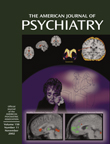This book is a sequel to that published under the same name and editorship in 1993. All of the authors are North American—six Canadian and the rest from the United States. Most are psychiatrists, and there are eight psychologists and a sprinkling of other professionals. Twenty-one of the chapters have the same authors as the earlier edition, and five the same title but different authors. There are two new chapters, “Psychopharmacology in Women” and “Psychological Aspects of Lesbian Health Care.”
The chapters are inevitably variable in quality and quantity. There is a weighty chapter on “Women and Violence” by Warshaw; it has 375 references, including more than 100 published in the last 5 years, but they include few from outside North America, although domestic violence is a universal phenomenon, widely researched. About half of the chapters are outside my area of detailed knowledge, but I cannot help noticing that there are some without a single non-North American reference. They include “Adolescent Pregnancy,” “Gynecologic Oncology,” “Alcohol and Substance Abuse in Private Obstetrics and Gynecology Practice,” and “Reproductive Choices and Development,” all of which are of world-wide interest.
When we come to the chapters dealing with subjects within my experience, I am puzzled. The chapter “Postpartum Disorders” has the merit (present also in the first edition) of devoting subsections to the mother-infant relationship and postpartum anxiety disorders, not just “the blues,” postnatal depression, and psychosis. The authors have not included new research, however. More than 100 publications appeared on postpartum psychosis between 1992 (when the first edition went to press) and 2000; only two of them are cited, and they do not include the work from the Institute of Psychiatry in London or the Danish epidemiologic study of Terp and Mortensen
(1).
One of the most interesting etiological clues in mental disorders is the relation to menstruation, but the authors of the chapter “Psychological Aspects of the Menstrual Cycle” seem to have missed the extensive literature on menstrual psychosis. This disorder is uncommon, but it sits squarely on “the interface between psychiatry and gynecology,” and there will be some American women suffering from it who would have wished it had been given a hearing. The writer of the chapter “Induced Abortion” has also missed the literature on postabortion psychosis, overlooking another authoritative Danish epidemiologic study
(2). In Europe we consider that the psychiatry of pregnancy and motherhood is making progress and (rightly or wrongly) attribute this partly to conjoint mother and infant hospitalization and the specialist teams that have developed in Great Britain, Australia, and France following the pioneering work of Main in 1948. This is scarcely mentioned. The Australians, Danes, and Swedes have made great contributions, but there are more references here to psychoanalytic works than to Australasian or Scandinavian studies. There is only one reference to work in a foreign language.
One has the impression that the authors have little respect for work outside North America. This would be a mistake—scientifically and clinically. This book performs the valuable function of indicating the scope and the breadth of the discourse on women’s mental health, but there is a risk that it will be considered an up-to-date compendium of position papers and will stand between the reader and international research in a rapidly advancing field.

